
亚洲泌尿外科杂志(英文)(Asian Journal of Urology) 维普知网目次万方目次
- CSCD
- 主管单位:
第二军医大学
- 主办单位:
上海市科学技术协会、第二军医大学
- 国际刊号:
2214-3882;EISSN2214-3890
- 国内刊号:
31-2124/R
- 学科分类:
- 字数:
6000-20000
- 有无基金:
/有基金 100.0%
- 周期:
CN外文-季刊
- 特殊属性:
外文期刊
- 电话:
021-58405251(202304期)
- 邮箱:
aju_admin@163.com(202304期);ajurology@smmu.edu.cn(官网邮箱)
- 复合因子:
0
- 综合因子:
0
- 收录:
维普,知网目次,万方目次
- 级别:
CSCD
期刊简介
《亚洲泌尿外科杂志》期刊已被查看: 次
更新频次
单位占比
一作占比
/有基金-100.0%投稿指南
1、投稿方式:在线投稿。
2、刊内网址:(202304期)
http://www.ajurology.com
https://www.sciencedirect.com/journal/asian-journal-of-urology
https://mc03.manuscriptcentral.com/aju(投稿系统)
3、刊内邮箱:aju_admin@163.com
官网邮箱ajurology@smmu.edu.cn
4、刊内电话:021-58405251
5、出刊日期:季刊,逢季首月出版。
2024年4月22日星期一
《亚洲泌尿外科杂志(英文)》作者指南
【官网信息】
Guide for Authors
Asian Journal of Urology is an international peer-reviewed journal jointly founded by Shanghai Association for Science & Technology (SAST) and Second Military Medical University. It focuses on all specialties of urology both basically and clinically (including, but not limited to, surgical oncology, endourology, calculi, female urology, erectile dysfunction, pediatrics, renal transplantation, reconstructive surgery, infertility, radiology, pathology, and neurourology).
Manuscript submission
Manuscripts for Asian Journal of Urology should be submitted via the homepage of the journal at http://www.ajurology.com or via the online manuscript submission and review system at http://mc03.manuscriptcentral.com/aju.
If you have any questions for papers’ preparation, please contact Editorial office of Asian Journal of Urology via ajurology@smmu.edu.cn.
Article types
Editorials usually provide commentary and analysis concerning an article in the issue of the Journal in which they appear. They may include 1 figure or table. They are nearly always solicited, although unsolicited editorials may occasionally be considered. Editorials are limited to 750 words, with up to 10 references.
Reviews should include the urological questions or issues which are importance for biomedical research, clinical practice, special practice, or public health; description of how the relevant evidence was identified, assessed for quality, and selected for inclusion; synthesis of the available evidence such that the best-quality evidence (e.g., randomized clinical trials, meta-analyses, systematic reviews, and high-quality prospective cohort studies) should receive the greatest emphasis; and discussion of controversial aspects and unresolved issues. Authors will be asked to describe characteristics of the literature search performed for their review. A narrative (unstructured) or structured abstract is required and should not exceed 250 words. Maximum length: 6000 words of text (not including abstract, tables, figures, references, and online-only material), with no more than a total of 4 tables and/or figures and no more than 50-75 references.
Mini-reviews are much more focused than Reviews. A Mini-review introduces the reader to a particular area of an author’s research through a concise overview of a selected topic. The content should balance scope with depth, and references to important works from others that are significant to the topic, should be included. It is shorter (approximately 2000 words). However, it should still have an Abstract (no more than 150 words) that should similarly arouse the readers’ interest.
Original articles typically include basic research, randomized trials, intervention studies, cohort studies, case-control studies, epidemiologic assessments, other observational studies, surveys with high response rates, cost-effectiveness analyses and decision analyses, and studies of screening and diagnostic tests. These articles should be arranged as follows: Title Page, Abstract, Introduction, Materials (Patients) and Methods, Results, Discussion, Conclusions, References, Tables, Legends. A structured abstract is required and must conform to the following style: Objective, Materials (Patients) and Methods, Results, Conclusion. Maximum length: 5000 words of text (not including abstract, tables, figures, references, and online-only material). There should be no more than 8 tables and/or figures.
Clinical experiences report the experience for diagnosis, treatment or prevention of urological diseases. A structured abstract is required. Maximum length: 2000 words of text (not including abstract, tables, figures, references, and online-only material) with no more than a total of 5 tables and/or figures.
Clinical images are intended to provide a visual image of an interesting and unique urological observation. A 500-word description (including acknowledgment, all text, tables, figure legends, and references) of the clinical issue, the patient’s urological findings, and the image should be included. There should be no more than 2 images and 4 references.
Case reports include short reports or original studies or evaluations or unique, first-time reports or clinical cases (individual or a series). Maximum length: 1000-2000 words (including acknowledgment, abstract, all text, tables, figure legends, and references), with no more than 15 references and 4 tables and/or figures.
Letters should be useful to urological practitioners. The length should not exceed 1000 words. There should be no more than 2 tables and/or figures and 10 references.
Special feature
Urological data include 1) the number, distribution and features of urological institutes, equipments, and researching faculty in various countries in the world; 2) the data analysis of international cutting-edge researches on urology, such as new theories, techniques, projects, clinical trials, awards, patents, and outcomes transforming; 3) quantitative analysis on urological literatures to provide references for future researches. Submissions could be research article (3000-4000 words), commentary (1000-2000 words), or meta-analysis (4000-6000 words).
Asian focus welcomes researches with typical Asian features, including those on epidemical, genetical, regional areas, and occupational, frequently occurring diseases, as well as disease spectrum and other representing the current situations in Asia (Asian countries’ names are preferred appearing in the title). It also includes policy and guide interpretation in Asian countries and regions. Submissions could be research article (3000-4000 words), review (4000-6000 words), commentary (1000-2000 words), opinion or view points (1000-2000 words).
Manuscript preparation
Cover letter
Submitted manuscripts should be accompanied by a covering letter giving details of:
1) the title of the manuscript and its main point;
2) a statement that the manuscript has not been published in part or whole (except in the form of abstract) or is not under consideration for publication elsewhere in any language;
3) a statement that all authors have agreed to be so listed and have seen and approved the manuscript, its consent and its submission to Asian Journal of Urology;
4) a full current postal address, telephone, and current email address. We usually communicate with authors by email.
Subdivision - numbered sections
Divide your article into clearly defined and numbered sections. Subsections should be numbered 1.1 (then 1.1.1, 1.1.2, ...), 1.2, etc. (the abstract is not included in section numbering). Any subsection may be given a brief heading. Each heading should appear on its own separate line.
Title page
The title page should contain
1) Title
2) Authorship: Please include affiliation details for all authors. Indicate the email address of the
corresponding author.
3) Running title
Abstract
Keywords (three to eight)
Please include at least three descriptive keywords (maximum of eight) that capture the main
topics of the article.
Main Text (Key body of work, normally divided into sections and described by short headings)
Author contributions
Conflicts of interest
In the interests of transparency and to help readers to form their own judgements of potential bias, Asian Journal of Urology requires authors to declare to the editors any conflicts of interests in relation to the work described.
Acknowledgments (including any personal thanks as well as listing the source of research funds)
References
Authors are responsible for the accuracy of the references. Published articles as well as those in press (please state the name of the journal) may be included. In the text of the manuscript, references to the literature should be numbered consecutively. Each reference should be numbered individually and listed at the end of the manuscript; examples are given below. All authors should be quoted for papers with up to six authors; for papers with six or more authors, the first six authors only should be quoted, followed by et al.
Example:
Journal article up to six authors (list all authors):
Alenezi H, Denstedt JD. Flexible ureteroscopy: Technological advancements, current indications and outcomes in the treatment of urolithiasis. Asian J Urol 2015; 3: 133-41.
Journal article more than six authors (list first six and add et al.):
Chen R, Xie L, Cai X, Huang Y, Zhou L, Ma L, et al. Percent free prostate-specific antigen for prostate cancer diagnosis in Chinese men with a PSA of 4.0–10.0 ng/mL: Results from the Chinese Prostate Cancer Consortium. Asian J Urol 2015; 2: 107-13.
Book:
Armitage P. Statistical Methods in Medical Research. Oxford: Blackwell Scientific Publishers; 1971. p239.
Chapter in a book:
Morley JE, Kaiser FE, Jonson LE. Male sexual function. In: Cassel CK, Riesenberg DE, Sorensen LB, Walsh JR, editors. Geriatric Medicine. New York: Springer-Verlag; 1990. p256-70.
Table and figure captions (numbered in sequence as they appear in the text)
Figure legends
Tables
Tables must be concise and cited consecutively using Arabic numerals in the text (Table 1, Table 2, etc.).
Figures
Figures (photographs, drawings, diagrams and charts) should be clear, easily legible and cited consecutively using Arabic numerals in the text (Figure 1, Figure 2, etc.).
Black and white images (photographs, line drawings, graphs etc.) should be saved and supplied as TIFF, or JPEG files with a minimum resolution of 600 dpi.
Colour images should be saved and supplied as TIFF, or JPEG files with a minimum resolution of 350 dpi.
If a figure comprises more than one glossy photograph, these should be marked A, B, C, etc.
Scale markers should be indicated in the photographs.
Supplementary information
Supplementary information is peer-reviewed material directly relevant to the conclusion of an article that cannot be included in the printed version owing to space or format constraints. It is posted on the journal's website and linked to the article when the article is published online and supplementary information may consist of data files, graphics, videos or extensive tables.
Ethical requirement
Asian Journal of Urology follows the International Committee of Medical Journal Editors (ICMJE) Recommendations for the Conduct, Reporting, Editing and Publication of Scholarly Work in Medical Journals and we also follow the Committee on Publication Ethics (COPE) guidelines. All the contributions being considered for publication in Asian Journal of Urology should meet the criteria in the ICMJE Recommendations. Especially the manuscripts reporting studies involving human subjects, statements identifying the appropriate institutional review board approving the studies and confirming that informed consent was obtained from all subjects must appear in the method section. We also suggest that researchers carrying out experiments with animals refer to the ARRIVE guidelines.
Copyright
Upon acceptance of an article, authors will be asked to complete a “License to Publish”. Acceptance of the license will ensure the widest possible dissemination of information. An email will be sent to the corresponding author confirming receipt of the manuscript together with a “License to Publish” form or a link to the online version of this license. Permission of the journal is required for resale or distribution outside the institution and for all other derivative works, including compilations and translations (please consult Asian Journal of Urology ajurology@smmu.edu.cn). If excerpts from other copyrighted works are included, the author(s) must obtain written permission from the copyright owners and credit the source(s) in the article.
Language
Please write your text in good English (American or British usage is accepted, but not a mixture of these).
Page Charge and Color Charge
We are waiving all fees for authors, including page charge, cost for color photos and cover images now.
《亚洲泌尿外科杂志》同类外科学期刊
-
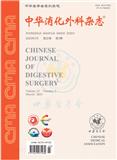
中华消化外科杂志
北核,CSCD,科核,武A+,高T2
CN中文-月刊影响因子2.781
-
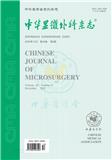
中华显微外科杂志
北核,CSCD,武A-
CN中文-双月刊影响因子1.939
-
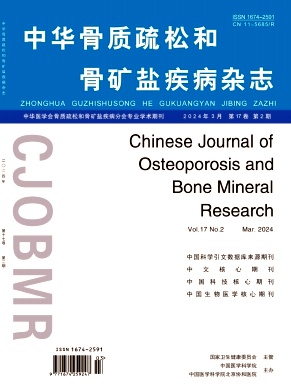
中华骨质疏松和骨矿盐疾病杂志
北核,CSCD,科核,武A,高T3
CN中文-双月刊影响因子1.349
-
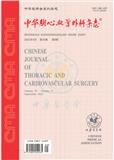
中华胸心血管外科杂志
CSCD,科核,高T2
CN中文-月刊影响因子0.752
-

中华手外科杂志
北核,CSCD,科核
CN中文-双月刊影响因子1.035
-
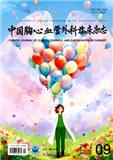
中国胸心血管外科临床杂志
北核,科核,CSCD扩,武B+,CACJ-扩展
CN中文-月刊影响因子0.936
-
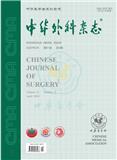
中华外科杂志
北核,CSCD,科核,武A+
CN中文-月刊影响因子1.358
-
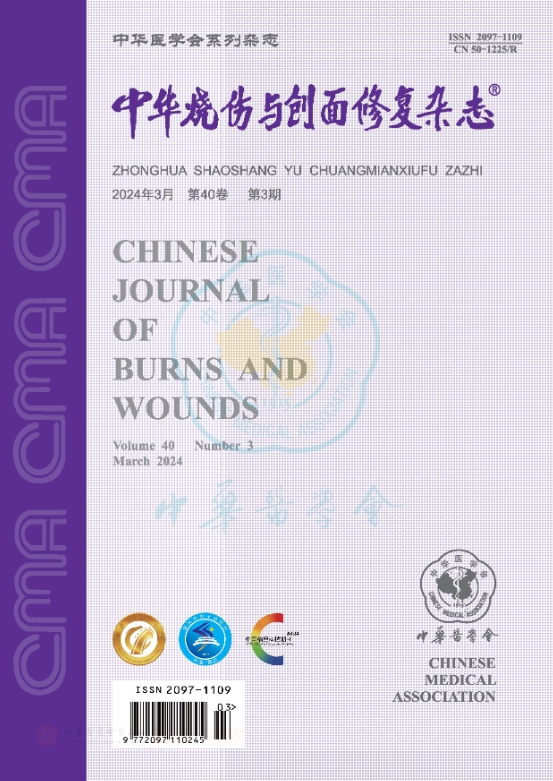
中华烧伤与创面修复杂志(原:中华烧伤杂志)
北核,CSCD,科核,武A,高T1,高T2
CN中文-月刊影响因子1.581
常见问题
-
亚洲泌尿外科杂志杂志社官网、联系方式是什么?
亚洲泌尿外科杂志杂志社官网:http://www.ajurology.com
投稿网址:https://mc03.manuscriptcentral.com/aju联系电话:021-58405251(202304期)
投稿邮箱:aju_admin@163.com(202304期);ajurology@smmu.edu.cn(官网邮箱) -
亚洲泌尿外科杂志杂志是核心期刊么?
亚洲泌尿外科杂志是核心期刊,级别是:CSCD, 是:外科学分类下的维普,知网目次,万方目次收录的期刊。
-
请问你们是亚洲泌尿外科杂志杂志社吗?
我们不是《亚洲泌尿外科杂志》杂志社。本站主要从事期刊信息展示与期刊推荐,不是任何杂志官网,直投稿件请联系杂志社。本站仅提供免费的学术指导、论文辅导、期刊投稿信息整理收集服务。
-
你们指导服务后可以保证文章被发表吗?
期刊发表的成功与否,主要取决于文章内容的质量。编辑老师会根据研究领域、创新性等多因素进行考量。我们会帮助您理解期刊的发表要求,助力提升发表几率,从而增加发表的机会。
-
晋级论文能否在报纸上发表?
在学术界,论文的发表往往被视为研究者职业发展的重要一环。晋级论文,即为了获得更高职称或学术地位而撰写的学术论文,通常需在专业期刊上发表。然而,许多人可能会问
